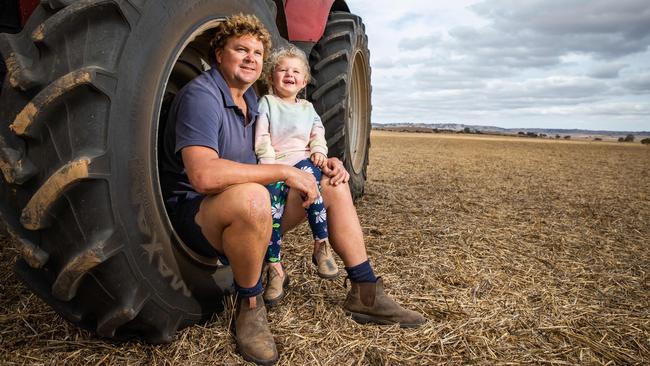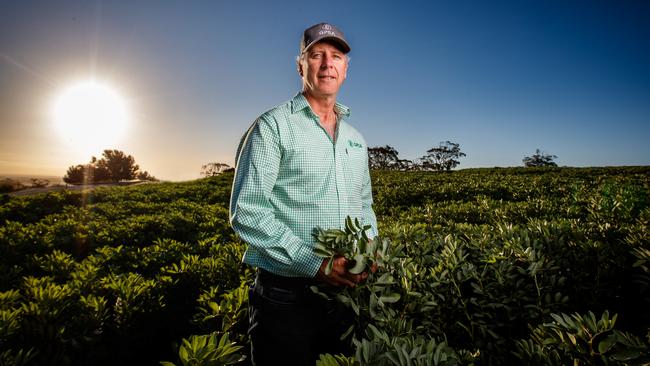Ukraine grain strain hits South Australian farmers
SA farmers are considering drastic measures after taking two big hits from Russia’s war on Ukraine – and it could mean another blow to household budgets.
SA News
Don't miss out on the headlines from SA News. Followed categories will be added to My News.
Skyrocketing fertiliser prices will increase the cost of planting a crop this year, farmers say, and some are likely to trim back the areas they sow as a result.
Prices started shooting up during the Covid pandemic, when China started to restrict supply and shipping became more expensive and unreliable.
Then war in Ukraine pushed prices higher still, because countries on both sides of the battle are exporters and there are sanctions on trade with Russia.
This week UK-based CRU Group’s fertiliser index reached another new record high: “At 390, it is up from 377 last week and well above the 360 record set in 2008.”
The index combines data for nitrogen, potash and phosphate, which are all going through the roof. Since the beginning of 2020, nitrogen fertiliser prices have quadrupled, while phosphate and potash prices have more than tripled, CRU Group said.

Fertiliser Technology Research Centre director Professor Mike McLaughlin, at the University of Adelaide, said record high fertiliser prices would feed through into food prices.
“With the cost of production going up, farmers have got the choice of either using less fertiliser, or paying more for their fertiliser,” he said.
“If they use less fertiliser, yields will probably fall and therefore supply of grain will decrease – but demand will still be there, so again supply and demand means (grain and food) prices will go up.”
Prof McLaughlin said farmers preparing to sow crops in coming weeks were debating how high the wheat price had to go to make urea (nitrogen fertiliser) was competitive at its current price.
“It’s a trade off, they have to work out what yield increase they’re going to get and how much is grain, per tonne,” he said. “They’re juggling those figures all the time to work out what it’s worth putting on.”
Riverton farmer Sam Przibilla said although the increasing costs would hit farmers’ bottom lines, high commodity prices would help them weather the additional costs they’re facing.
Farmers must take a gamble that the extra money they’re forced to put into their crops this year will pay off – a significant leap of faith for those not harvesting in high rainfall areas.

“I’ve heard of people that aren’t going to be cropping as much because they can’t afford to take that risk,” Mr Przibilla says.
Grain Producers SA chairman Adrian McCabe expected farmers to reduce their wheat and canola crops this year, and replace them with legumes that use about two-thirds less fertiliser.
“It’s going to cost a lot to invest in our farming program this year – higher than we’ve probably ever seen,” he said.
Mr McCabe said his organisation wanted governments to commit to exploring options for more domestic fertiliser production, so the country was less reliant on imports.




